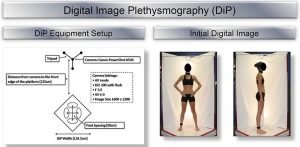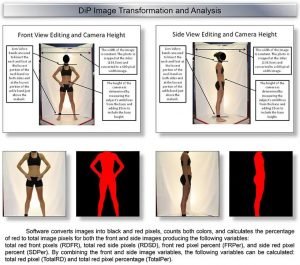L’esperienza trentennale nella Bioingegneria e nella Fisiologia applicata alla Composizione Corporea, che ha permesso la realizzazione di software e dispositivi medici utilizzati da migliaia di Professionisti, è culminata nella creazione di FitYourOutfit®.
Il nostro obiettivo è quello di fornire, ai professionisti della Nutrizione e dello Sport, strumenti innovativi utili a creare valore attraverso una semplificazione delle metodiche dedicate alla rilevazione della Composizione Corporea, migliorando nel contempo l’esperienza dei loro Clienti.
Ricerca e progettazione FitYourOutfit: Ing Tony Talluri
Tony Talluri è noto a livello mondiale ed è considerato un’autorità nel campo dell’impedenza bioelettrica. Nell’arco di circa 40 anni ha sviluppato sistemi innovativi di stimolazione elettrica, bioimpedenziometria, pletismografia, realizzando dispositivi non invasivi per l’analisi qualitativa e quantitativa della Composizione Corporea, classificazione dello stato d’idratazione e nutrizione attraverso dispositivi, nomogrammi, equazioni e concetti interpretativi innovativi, utilizzati a livello internazionale.
L’esperienza ultratrentennale maturata nel ramo “body composition” gli ha permesso, nel 2008, di ideare e promuovere ricerche pubblicate riguardanti un innovativo quanto rivoluzionario sistema da lui ideato e brevettato di misura del corpo, inedito e diverso da qualsiasi altro sistema. Culminato nella realizzazione del metodo FitYourOutfit®, un insieme di tecnologie che consentono di processare e scansionare un’immagine digitale mirato alla stima della massa grassa.
L’impegno nello sviluppo biomedicale di tale sistema innovativo, è stato preceduto ed affiancato da studi di validazione pubblicati e noti in tutto il mondo.
Collaborazioni ing. Antonio Talluri:
Nel corso della sua carriera ha avuto l’opportunità di collaborare anche con importanti aziende multinazionali e centri medici, negli Stati Uniti e in Europa, applicando una visione rigorosamente scientifica che privilegia la semplificazione delle metodiche.
Scienziati e Medici di assoluto rilievo nel mondo della composizione corporea, dello sport e della nutrizione hanno contribuito a validare la metodica alla base di FitYourOutfit®
Dr. Beck, Travis W.
Dr. Coscarella, Giorgio
Dr. Cramer, Joel T.
Prof. De Lorenzo, Antonino
Prof. Di Lorenzo, Nicola
Prof. Di Renzo, Laura
Dr. Farina, Gian Luca
Dr. Gaspari, Achille
Prof. Lukaski, Henry C
Dr. Moon, Jordan R.
Prof. Orlandi, Carmine
Dr. Servidio, Michele
Dr Smith, Abbie E.
Dr. Spataro, Fabrizio
Dr. Stout, Jeffrey R.
Dr. Tobkin, Sarah E.
Dr. Walter, Ashley A.
Bibliografia
A Smartphone Application for Personal Assessments of Body Composition and Phenotyping (2016) Gian Luca Farina , Fabrizio Spataro , Antonino De Lorenzo and Henry Lukaski.
PubMed: https://www.ncbi.nlm.nih.gov/pmc/articles/PMC5191142/
Abstract:
Personal assessments of body phenotype can enhance success in weight management but are limited by the lack of availability of practical methods. We describe a novel smart phone application of digital photography (DP) and determine its validity to estimate fat mass (FM).
This approach utilizes the percent (%) occupancy of an individual lateral whole-body digital image and regions indicative of adipose accumulation associated with increased risk of cardio-metabolic disease. We measured 117 healthy adults (63 females and 54 males aged 19 to 65 years) with DP and dual X-ray absorptiometry (DXA) and report here the development and validation of this application.
Inter-observer variability of the determination of % occupancy was 0.02%. Predicted and reference FM values were significantly related in females (R2 = 0.949, SEE = 2.83) and males (R2 = 0.907, SEE = 2.71).
Differences between predicted and measured FM values were small (0.02 kg, p = 0.96 and 0.07 kg, p = 0.96) for females and males, respectively. No significant bias was found; limits of agreement ranged from 5.6 to 5.4 kg for females and from 5.6 to 5.7 kg for males. These promising results indicate that DP is a practical and valid method for personal body composition assessments.
Is Digital Image Plethysmographic (DIP) Acquisition a Valid New Tool for Preoperative Body Composition Assessment? A Validation by Dual-energy X-ray Absorptiometry (2006)
Nicola Di Lorenzo, MD, PhD, FACS – Michele Servidio, MD – Laura Di Renzo, PhD – Carmine Orlandi, PhD – Giorgio Coscarella, MD – Achille Gaspari, MD, FACS – Antonino De Lorenzo, MD, PhD
https://pubmed.ncbi.nlm.nih.gov/16687022/
Abstract
BACKGROUND:
The increasing incidence of obesity and the wider acceptance of laparoscopic surgery, have lead to a 10-fold increase in bariatric operations in the last 10 years. Widely used indices of obesity (weight and body mass index – BMI) cannot adequately distinguish between fat mass (FM), represented by the sum of kilograms (kg) of lipid, and fat-free mass (FFM), inclusive of lean (kg of proteins), bone (kg of minerals), glycogen, and total body water (TBW), which are important parameters for clinical and physiological studies.
METHODS:
Anthropometric variables were measured in 19 Caucasian Italian individuals according to standard methods. Body weight (kg) and height (m) were measured, and BMI was calculated as kg/m(2). Body composition was evaluated, with a mean BMI of 25.95+/-5.04 kg/m(2), by dual X-ray absorptiometry (DXA) and by digital image plethysmographic (DIP) acquisition with a digital camera. The clear-colored body of the subjects was automatically converted into a front and lateral red-shaped figure, and then through algorithms the 2 pictures were transformed into a nominal volume; body weight was then divided by the estimated volume, so that the body density could be obtained. DXA was used as a comparison to assess fat mass and fat-free mass. Radiation exposure was <0.6 mSv.
RESULTS:
Significant positive correlation (R= 0.971, P<0.001) was found between data of body composition obtained by DXA and DIP.
CONCLUSIONS:
Body volume assessed using DIP or DXA did not differ. According to this validation study, DIP represents a new promising tool for clinical applications.
A new simplified method for tracking body volume changes using digital image plethysmography (DiP) (2008)
Jordan R. Moon, Sarah E. Tobkin – Ashley A. Walter – Abbie E. Smith – Chris M. Lockwood – Travis W. Beck – Joel T. Cramer – Jeffrey R. Stout,
OBJECTIVE:
Tracking body composition changes during weight-loss interventions is important in both clinical and commercial settings. Accurately tracking body volume (BV) changes can be a useful method to examineweight-loss interventions because BV is not dependent on age, ethnicity, sex,oractivity level. However, measuring BV using air-displacement plethysmography (ADP) or hydrostatic weighing (HW) is expensive, time-consuming, and requires skilled technicians. Therefore, the purpose of the current investigation was to examinethe validity of digital image plethysmography (DiP) for estimating BV before and after a 10-week weight-loss intervention.
METHODS:
Twenty-two men(M)and women(W)(33±6yr; 12M, 10W) volunteered to have their BV estimated by ADP and DiP measurements. Thirteen subjects (8M, 5W) participated in a10-week exercise program (EX) while 9 subjects maintained their current activity level (CON). The following previously validated DiP equation(versus HW, r2=0.99, total error (TE) =1.54L, SEM=0.85L)was used to track changes using the DiP method: BV=0.0011(side body pixels) +2.08415 (total body pixels to empty pixel space percentage) -69.29694.


RESULTS: Preand Post TE values for both groups were less than 2.55L with high r2 and low SEEvalues (EX r2>0.97, SEE<1.72L; CON r2>0.98, SEE<1.94L). DiP accurately estimated BV changes (EX TE=1.06 L, SEE=1.00 L; CON TE=0.83 L, SEE=0.47 L) which were not significantly different (constant error, EX=-0.53, CON=0.33p>0.05) compared to ADP.
CONCLUSION:
The new DiP-based BV equation produced low SEE and TE values andhigh r2 values in both the EX and CON groups and accurately tracked BV changes. Therefore, DiP can be considered a valid method for estimatingand tracking BV in men and women.
mascaretti srl – wellness technologies
Via Mamiani 24-26 – 60125 Ancona
Tel. 071.2071338 – Fax 071.2071345
Info@mascaretti.it


